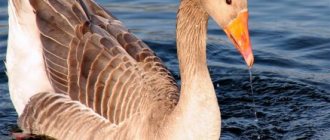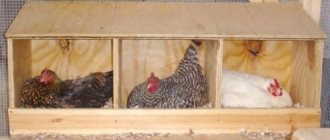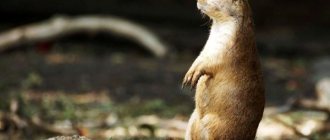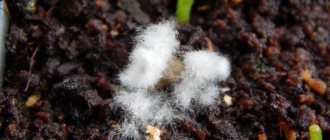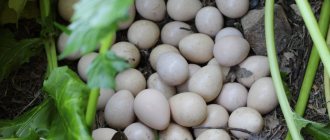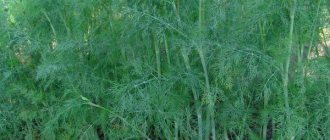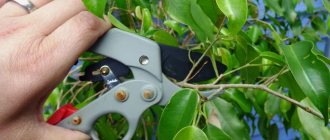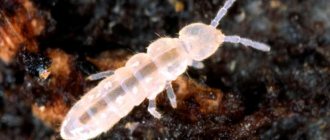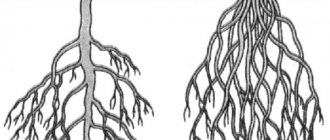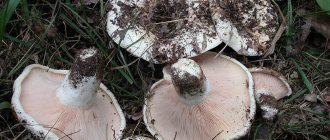Ground wasps description
The ground wasp is a member of the burrowing family.
She lives differently from ordinary bees (in hanging hives). Its habitat is the holes that it digs for itself in the ground. The main feature of this pest is its size. It is very small compared to other wasp species. Although there are also quite large individuals. Thus, the length of the insect’s body varies from 5 to 20 mm. Usually the male is much larger than the female. That is why it is easily distinguishable. But the female is quite difficult to notice, so ground wasp bites are not uncommon. Insects have large eyes that are located on both sides of the head. They are deep down. Each insect has complex wings consisting of two parts. All four wings are well connected to each other, so the earth wasp flies very quickly and can perform a variety of maneuvers. Therefore, if she decides to attack, it is almost impossible to escape from her. Each subspecies has its own special wing color. Their distinctive feature is the stripes found on each wing.
They build nests in the ground. Moreover, in the end they turn out to be of very high quality and multifunctional. First they create a vertical tunnel. Narrow horizontal bends are subsequently attached to it. At the end of each of them there is always a camera or cell. There is only one egg here. Thus, wasps create ideal conditions for the development of their future offspring. The uterus is responsible for its reproduction. The remaining wasps are workers. Their main task is to obtain food for themselves and for the queen. This wasp is fertilized only once. But this is enough for her for the rest of her life. So, during the short period of its existence (about a year), it lays approximately 2000 eggs.
Harm and danger of earthen wasps
One insect can destroy up to 70 pests per day (aphids, small caterpillars, midges). At the same time, wasps engage in a kind of terrorism: they take pollen from bees. Shrews (the second name for insects) dig 2-5 nests in one area and reproduce offspring. They themselves are aggressive, so if a person does something near the nest, especially eating sweet food, he risks being bitten.
The greatest danger for an adult and a child is the destruction of one or more wasp holes located in the ground. The insects become very aggressive and sting painfully, and do this repeatedly. Their bites cause severe swelling, itching, increased body temperature, and in rare cases, anaphylactic shock. If you are going to carry out excavation work, knowing about the presence of wasps, be sure to dress in tight clothing without gaps, cover your face with a mask, and protect your head with a cap with a visor.
Features of insects
This type of wasp appears quite often in summer cottages, so the problem of how to get rid of dangerous insects is of interest to many owners of country plots. Although whether it is worthwhile to exterminate them is a moot point. After all, not only danger and harm come from earth wasps. These insects destroy a considerable number of pests - caterpillars, aphids, etc. But their bites are dangerous, they take away nutritious pollen from bees, and those who often spend time in the country will look for ways to remove them.
In addition to pollen, wasps feed mainly on smaller insects. Externally, wasp nests look like bee hives. Individual insects protect their homes and show aggression when approaching them. Therefore, it is not worth doing gardening or gardening work near wasp nests. Many bites from these insects can cause serious harm to health, and in people prone to allergic reactions, even death.
However, if only one nest appears at the dacha, located in a remote area of the site, then you can safely leave it untouched. In the summer, the wasps will destroy pests, and in the fall they will simply disappear.
Features of life
The main one among the wasps is the queen. She is always underground and is responsible for the reproduction of the species. She is fertilized only once, but can produce up to 2,000 larvae at a time.
Ground wasps are predators. They hunt:
- Zhukov;
- caterpillars;
- spiders;
- flies;
- aphids
Insects go out hunting one by one, accumulating in large numbers only near water.
The benefits and harms of earthen wasps
Ground wasps can be beneficial for garden plantings. Just one insect destroys about 70 pests per day. If there are wasps in the area, the plants will be reliably protected from caterpillars and aphids.
But there is also a downside. Ground wasps are aggressive and can attack people. When a wasp bites, it does not leave a stinger in the human body, so it can sting repeatedly. An aggressive insect secretes a special hormone that is sensed by other wasps, even when they are several hundred meters away. Sensing danger, insects fly in large numbers to the place where the smell comes from. As a result, a person is attacked by a whole swarm of wasps.
If a nest of earth wasps was found in your garden plot, it is better to get rid of it. Wasp stings do not pose a health hazard. But they can provoke a severe allergic reaction, which does not appear immediately, but several hours after the attack. A particularly intense reaction is observed in children. Children have a hard time with insect bites.
Is it worth taking them out?
Due to the fact that ground wasps actively catch other insects (including agricultural pests), in some cases getting rid of them means destroying very useful helpers in the fight for the crop.
In this regard, the question arises: is it even worth exterminating earthen wasps in a summer cottage? Indeed, is it really necessary to fight ground wasps if one of their nests consumes at least 50-70 harmful insects per day, including caterpillars, bedbugs and aphids?
In fact, to make the right decision, you need to consider some additional important points.
If the wasp nest is located in the center of a flowerbed or garden bed, if the insects interfere with the work necessary on the site, or constantly fly near the table, summer kitchen or children’s play area, you need to remove them without hesitation. It is also necessary to destroy the nest of earthen wasps if it is located in a potato bed: in August-September, when the potatoes need to be harvested, the disturbed swarm can severely bite gardeners.
If the wasps have settled somewhere in the corner of the garden and are not bothering anyone, then there is no need to get rid of them - let the insects help fight pests. Even if ground wasps have chosen a certain garden bed, but the vegetables on it will need to be dug up only in late autumn, you can also leave them alone - the nest will empty on its own.
Ground wasps - what kind of species
Ground wasps are not described in any entomology reference book. The name of insects appeared among the people. This species includes all wasps that build their nests underground. What makes insects settle in such a place? Wasps usually settle in secluded places on tree branches. If such a place is not found, the queen decides to build a nest underground. In some cases, this happens because the wasps do not want to bother themselves with additional construction of structures, or there is a suitable food source nearby. Usually insects live in such a secluded place for one season.
Ground wasps
There is another type of wasp that lives mainly underground. These insects live alone, laying eggs in the bodies of captured flies. By the beginning of the new season, the larvae have fully developed, so that a swarm of wasps flies out of the hole. It is very difficult for an ordinary summer resident to understand the variety of striped hymenoptera, but experts distinguish them by the shape of the body and the pattern of the wings.
There is an opinion that wasps are safe for the owners of the site, but this is not at all true. There are cases when a swarm is indifferent to human activity for months, but at the slightest provocation the insects begin to show aggression. Often the signal for an attack is a threat to the safety of the nest. Wasps may consider fast movements or human screams as a reason to attack.
Note! Wasps can be useful - in one day an individual catches 70 pests: bedbugs, caterpillars and larvae. The nest can be left if it is located in rarely visited areas of the garden. If insects have settled in potato beds, they must be driven away, otherwise they will attack people when harvesting.
Why do wasps settle in the ground?
Explaining why wasps live in the ground is not always easy. The following versions are most often put forward:
- the queen found a ready-made secluded hole;
- the family is quite small or weak to build a complex building from scratch, so protected, hidden places suitable for living are chosen;
- Solitary wasps often do not bother building a nest, but look for ready-made places suitable for habitation;
- There is a lot of food near the chosen place.
Loner
Not only ground wasps can be found in the soil. Often, even those species that usually make nests on branches or walls of buildings are localized in burrows underground.
Species and distribution
A significant part of the existing species belong to ground wasps. You can meet them almost everywhere, with the exception of the icy Arctic and hot deserts. Sometimes nests are located on the surface of the ground, and some families dig a complex system of tunnels at a depth of several meters.
Sand burrowing wasps
Sand burrowing wasps are classified as solitary wasps and live in the ground. The size of adult individuals ranges from 5 to 20 mm. The body is usually elongated, the color is black with yellow, orange or red, depending on the species. They hunt insects, which they bring to the nest to feed the larvae.
Road wasps
Another family of wasps that live in the ground. Insects of medium or large size (from 15 to 45 mm) live mainly in regions with a tropical climate. Insects practically do not fly, preferring to crawl on the ground. Predators hunt mainly arachnids. The wasp drags the paralyzed or dead victim into the dwelling, where it lays eggs in its body, which the emerging larvae will feed on. The venom of road wasps is very toxic and the bite is painful.
German wasps
This species superficially resembles a common wasp, but most often the adult individuals are somewhat smaller (about 12 mm). They live in small colonies, preferring to settle in forests.
Floral
Flower wasps are small insects, rarely reaching a size larger than 10 mm. The color is traditional black and yellow, but the body is covered not with stripes, but with spots. These wasps are solitary. They make nests both in trees and on the ground. The building material for the nest is a mixture of sand, clay and its own saliva. Both adults and larvae feed on pollen.
Scolia
Another family of solitary wasps that make nests in the ground. The insects are large; depending on the species, the body size varies from 10 to 65 mm. The body is black with white, orange, yellow and red spots or stripes. Adults eat nectar, larvae are carnivores. Females lay eggs in the larvae of some species of beetles, which the hatched offspring feed on.
Life, appearance, behavioral features of earthen wasps
Ground wasps are usually understood as a large group of stinging insects from the order Stalocoptera. These are small creatures, 1.5 to 5 cm long, with 2 pairs of membranous wings and a pair of small antennae. The color of insects is characteristic; the entire body is covered with alternating stripes of yellow and black-brown tones. The wasp's body is smooth, but it is hidden by a continuous cover of small hairs. At the end of the abdomen, insects develop a characteristic sting with a poisonous gland; it acts as the main tool in defense and hunting.
Ground wasps are focused on building their homes exclusively in the ground or on its surface. But such insects are often not classified as a separate group, since the soil is not their only habitat. Therefore, after the separation of the family, young individuals can successfully settle in a radically different place.
As you know, wasps build their homes only in quiet and secluded places, so they can most often be found in tree hollows and attics. However, if there is no suitable place nearby, they can settle in the thickness of the soil layer. Often the reason for this can be the abundance of food supply in combination with an ideal microclimate, which have a beneficial effect on the growth of the family.
Did you know? Wasps are one of the few insects that can distinguish the appearance of their relatives. However, this feature is observed only in social individuals living in families.
But individual insects also create burrows in the soil. They lay eggs in them, from which young individuals will hatch later in the spring. In this case, the ground dislocation for insects becomes only a temporary habitat, as well as the best way to protect offspring from unfavorable environmental conditions.
Lifestyle
Ground wasps in the country - how to get rid of them
In midsummer, the number of insects in one hive can reach tens of thousands. In the family, each insect performs its predetermined functions: builds, hunts, and cares for the larvae. The only individual that produces offspring is the queen, which is protected by all wasps.
The insects' diet consists of flower nectar, juice of vegetables and fruits, honey stolen from apiaries and hives of wild bees. To grow, the larvae require a large amount of protein, so worker wasps kill insects or flock to the smell of meat and fish while cutting them on the street.
Wasp activity increases greatly towards the end of summer. They can penetrate buildings, vigorously circle around the site, interfering with work, and when approaching their habitat, they attack furiously. If a person is attacked by a whole swarm, the resulting herbs can lead to anaphylactic shock.
Lifestyle of earth wasps
Methods for removing wasps from land
If you find wasps in your dacha and want to get rid of them, check out the possible ways to deal with ground wasps at home. The procedure for destroying uninvited neighbors is best carried out in the evening, when it gets dark. At this time, striped insects as a whole family sit in the nest. You can destroy a wasp nest in the following ways:
- Burn them out. To do this, take 1 or 2 liters of any flammable liquid, carefully pour it into the hole, make a narrow path and set it on fire. Honeycombs made of paper will burn instantly and without a trace, and with them all the insects in them.
- Pour boiling water over them. Boil 2 - 3 buckets of water, take it outside and pour it into the hole of the mink. Then immediately cover it with a stone, brick or other heavy object of suitable size so that insects trying to get out do not climb out. It is possible that you will need to do the pouring again, since some of the wasps may survive the first time.
- Treat with insecticides. Pour a solution of insecticidal preparations into the mink, for example Cucarachi, Geta, Karbofos, Aktara, Tsimbusha, Mosquitol, Solfisan, Troapsil. To prevent insects from crawling to the surface, plug the entrance with a rag soaked in the same solution.
You can also exterminate wasps using baits with poison. The effect from them is not as fast as from previous methods, but it is there. To make bait, take 1 - 2 tbsp. l. any honey or thick berry or fruit syrup, mix the treat with an odorless insecticide. Boric acid will also work. Pour the poisonous mixture into a saucer or plastic lid and leave it in a place where ground wasps will notice them. They will fly to the smell, eat the poison and die. To completely get rid of striped neighbors, update the bait for 2 weeks.
Bite danger
Any insects bite hard. Bites are accompanied by severe cutting pain. Edema appears, turning red and swelling over time. The temperature at the site of the bite rises significantly. Over time, itching may occur. If the bite occurs in heavily innervated areas of the body - ears, lips, fingers, then the itching will be very severe.
Hornets - how to get rid of them in the house
In a healthy body, the swelling goes away within a week. The bruise may remain for up to 10 days. To quickly get rid of pain, folk remedies are used: compresses or lotions, pastes containing soda and laundry soap.
Important! The poison can cause an allergic reaction with varying degrees of intensity. The lesion may enlarge significantly if the swelling exceeds 1 cm in diameter. Then the use of antihistamines will be required.
Ground wasps feed on many parasitic insects, so if the hive is small and the distance from the cottage is large, you can leave them alone. However, if there are often children or allergy sufferers in the area, destruction of the hive becomes simply necessary. Otherwise, at the end of summer, the swarm will not allow the harvest to be harvested normally.
First aid for victims of wasp bites
If the wasp did manage to sting a person, then it is important to know about measures that can help minimize the negative consequences:
- Rinse the bite site with clean water; this will not only help disinfect the surface and minimize the likelihood of infection, but will also eliminate any remaining poison.
- If the sting remains at the site of the bite, then it must be carefully pulled out with tweezers, this will stop the further spread of the poison.
- All procedures should be carried out only with clean hands, and when using an additional tool, it must be treated with alcohol.
- Apply ice or any other cold compress to the bite site.
- Take any antiallergic drug, even if the corresponding reaction has not been diagnosed.
- According to traditional medicine, pain from a bite can be reduced by using dandelion, and swelling will be minimized by applying onion, tea compress or plantain.
At the same time, there are a number of cases in which, regardless of the situation and condition of the bitten person, a mandatory visit to the hospital and examination by a specialist is required:
- It is known that a person is allergic.
- The bites were caused by three or more insects.
- A child was bitten.
- The bite was made to any part of the face, tongue or larynx.
- Any side effects appeared, for example, changes in blood pressure, nausea, dizziness, convulsive reaction, etc.
When an insect bites or dies, a special chemical reaction occurs and specific substances begin to be released from the wasp’s body, attracting and provoking other individuals to attack.
Preparing to fight ground wasps
If you want to try destroying an underground hive yourself, the recommendations below will help you make any treatment less dangerous, avoid common mistakes and generally increase the chances of success.
- Do an allergy test for wasp venom. In commercial laboratories this service costs about 600–700 rubles, the same for bee venom. If the test gives a strong reaction or shows a high likelihood of anaphylactic shock, do not remove the nest yourself.
- Before destroying a nest, learn how to provide first aid for wasp stings.
- Buy a special protective suit or beekeeper overalls with a face mesh. Protection from several layers of closed clothing and other homemade research rarely provide the necessary level of tightness; wasps can find a loophole and bite.
- The best time to destroy wasp nests is spring, when colonies are still few in number. The longer the summer lasts, the more wasps in the hive.
- Apply at dusk or dawn, when it is dark enough outside that the wasps are still sleeping, but light enough so that you can see what you are doing.
- If you are destroying a nest at night, use a dim source of diffused light and place it away from you, such as on a tree, but so that you can clearly see the hive area.
Regardless of how confident you are or what your allergy tests show, plan your escape route from each nest and stock up on antihistamines and sting ointment before treatment. Just in case.
How to destroy a wasp nest in the ground
To remove a colony of ground wasps from a site, it is necessary to destroy their nest.
- During the day, while watching for insects, find all the entrances to the wasp's nest in the ground.
- Mark them by sticking white plastic knives or forks into the soil nearby to make the holes easier to find in the dark.
- Prepare several buckets, according to the number of passages in the hive, as well as a couple of spare ones, in case you did not notice some branch.
- Fill each bucket with soil and place it next to the passage for which it is intended.
- For each bucket, prepare something heavy that can be used to weigh it down on top, for example, a brick.
- Find and place stones next to each passage that are suitable in size to the diameter of the hole; they will be needed to plug the passage at a certain stage.
- Wait until it gets dark, make sure there are no people around you without protective suits, pets or neighbors.
- Cover each passage with a small stack, pressing it tightly to the ground; the caliber of the cells should easily allow liquids to pass through, but be small enough so that wasps do not get out through the cells to the surface.
- Holding the mesh firmly to the ground, begin spraying the aerosol insecticide into the tunnel.
One hive uses the entire bottle of product. After you have finished spraying the insecticide:
- If the mesh is soft, leave it, if it is hard, you can remove it or leave it at your discretion.
- Additionally, plug the passage with a stone.
- Fill the passage with previously prepared soil.
- Turn the bucket in which the soil was in and deepen it into the poured soil, thus covering the passage.
- For added protection, dust the bottom edge of the bucket itself and place a brick, stone, or something heavy on top of it to press it down into the ground.
- Leave the entire installation in this form for 1–2 days.
Usually all the wasps already die during the night or the first day, but for reliability, the structure can be kept longer than necessary.
- If you are treating with someone, several people may be administering each turn at the same time from different cylinders.
- If you carry out the processing alone, first wall up the side passages with stones, earth, buckets and a press.
- If you have not noticed any passage and the wasps are tearing out of it, you will need to quickly seal it, for which you should have spare buckets, earth and stones on hand.
Despite all efforts, it is extremely difficult to completely seal a hive in the ground. At any stage of the work, wasps may begin to fly out. You need to be prepared for this and not panic. The main reason for peace of mind in such a situation will be your beekeeper's protective suit. Perform all actions only in it.
Features of life and appearance
We need to start with the fact that earth wasps do not exist as a separate species. Ground wasps is a popular definition for all wasps living in the ground. It is not registered in the scientific classification. There you can find road and sand (burrowing) wasps, but not ground wasps.
In gardens and summer cottages you can find mainly the latter, which belong to different species, outwardly very similar to each other. These are yellow-black insects that can be mistaken for ordinary wasps, familiar to all, who build their homes under the roofs of buildings. For burrowing wasps, building their homes in the ground is a common thing. To do this, they make narrow passages in loose soil or populate abandoned rodent burrows, old anthills, empty spaces under tree roots, and suitable-sized hollows in half-decayed stumps.
Such wasps live both alone and in groups, and adult insects feed on nectar, which is found in flowers, the juice of sweet fruits, and their larvae feed on other insects (flies, spiders, caterpillars, and sometimes dragonflies). They are caught by adult wasps, injected with paralyzing poison and transported to the nest. There they lay 1 egg in them, close the entrance to the nest and leave it. Gradually, the larvae emerge from the eggs and begin to feed on the protein food stored for them. In the fall, they enter the pupal stage, in which they spend the entire winter. In the spring, with the onset of warmth, young wasps emerge from their cocoons and fly out of their holes.
But often, in the territories of household plots and summer cottages, the usual paper or social wasps, as well as hornets, which also belong to this family, settle in the ground. They are called papery because they build their spherical or cone-shaped nests from tiny pieces of carefully chewed tree bark, which they first soften with saliva. This building material resembles parchment in its properties and appearance.
The lifestyle of these “ground” wasps differs from the insects described above. They live in large colonies that can accommodate tens or even hundreds of wasps. The reasons that cause paper wasps to settle in the ground rather than build a traditional hanging nest are as follows:
- lack of a place that would be suitable for it;
- the attractiveness of an already prepared shelter found in the ground;
- availability of abundant food nearby.
This is how paper wasps become earth wasps. Otherwise, they are no different from their terrestrial relatives. Closer to autumn, males and females emerge from special large cells. Having grown stronger, they fly out of the nest and mate. The males soon die, and the females overwinter and establish new colonies in the spring. Just before the cold weather, worker wasps stop feeding the remaining larvae and destroy them and pupae. However, they themselves also die.
Means for baiting wasps in the ground
To kill wasps in the ground, you can use insecticides in the form of aerosols:
- Mosquitall from wasp nests
- Bros from flying insects
- Universal Combat
- Flying Insect Raptor
- Dichlorvos Neo
- Clean house from flies and wasps
- Raid Lavender
- Super Cobra
Insecticides can not be sprayed, but poured or injected into wasp holes diluted with water. The following concentrates are suitable for this:
- Xulat
- Dobrokhim micro
- Extermin-F
- Dr.Klaus against flies, wasps and other insects
- Agran
Prepare concentrates following the mixing proportions specified in the instructions.
How to get rid of a wasp's nest
- Having discovered a wasp hole in the ground, it is poured with boiling water. In the evening, when the adults return home, the passages are filled with hot water and the hole is completely covered with stones. The next day the treatment is repeated to get rid of the remaining insects. Underground honeycombs are removed from the soil and destroyed, and the voids are filled with earth. This serious procedure is carried out in protective clothing.
- The wasp's nest is destroyed by fire. Flammable liquid and oily substances are poured into the passages and set on fire. Most underground inhabitants will die, but this method is controversial and unsafe. Not every gardener will decide to use it in their beds, flower beds, near trees and shrubs.
- Ground wasps can be smoked out of their nest. A fire is made or a piece of rubber is set on fire next to the wasp’s dwelling. Acrid smoke will cause earth wasps to leave the hive.
Hornet's nest and features of life
Ground wasps begin building nests in the spring, with the arrival of warmer weather. Singles are engaged in creating a home on their own; the nest for the future colony is laid by the queen, who first selects the most suitable place.
Nest
Most often, insects make a nest:
- in a hole left by rodents;
- in an abandoned anthill;
- at the roots of trees;
- in the voids underground.
To free up the necessary space for the nest, the wasp digs the ground with its paws, using its jaws and wings to work. The nest itself is formed from wood, which the wasps thoroughly chew beforehand, turning it into a kind of paper.
Hatching rules
When a nest is discovered and it is established that it is located in close proximity to residential or domestic buildings, as well as simply places where people often visit, then its destruction is required.
Even if wasps do not show aggression, such a neighborhood can still be extremely dangerous, largely due to the unpredictability of the behavior of these insects when defending their shelter and their large number.
However, removing wasps is a complex and dangerous process, when performing it you must remember the following rules:
- It is strictly forbidden to use fire to remove wasps and destroy a nest if it is located on a tree, a wooden structure, or in close proximity to flammable materials.
- It is also undesirable to use gasoline or kerosene for removal in these places , even if it is not planned to be set on fire, since this will contribute to the creation of dangerous conditions.
- Provide protective clothing in advance , since if an attempt to destroy the nest is unsuccessful, its inhabitants will show the maximum degree of aggression.
- Before removing wasps, warn all neighbors and people living nearby about the planned event , so that they keep their windows closed at this time and try to refrain from going outside.
- Choose the most appropriate and safety compliant method for removing the wasp nest.
Security measures
As already mentioned, destroying a nest and the wasps inhabiting it is a rather dangerous undertaking, since if something goes wrong in this process, then a person will be confronted by a large number of aggressive insects who want to protect their home.
For this reason, it would be a good idea to take care of some security measures; below are some important tips related to this issue:
- Wear clothing made of thick fabric so that insects cannot sting through it. It is highly recommended to have a hood that will additionally protect your head.
- Gloves must be worn on your hands; varieties made of leather or thick rubber are best.
- The face should be covered with a special mosquito net mask, since bites to this part of the body are considered the most dangerous.
- Have pre-prepared ice, a tourniquet and anti-allergic drugs, for example, suprastin, which will be needed if the wasp does manage to sting a person.
Burning out the nest
Burning down the home of unwanted neighbors is one of the most effective methods of getting rid of them, if conditions allow you to put this method into practice.
However, before using such measures, it is necessary to take into account some features:
- The process itself is quite simple, since wasp nests are made of a special material that they extract by chewing tree bark, its structure is closest to cardboard. Therefore, it is enough just to pour gasoline or other flammable substance over their shelter and then set it on fire; complete burnout will occur in just a few seconds.
- Initially, you need to make sure that this method is safe. The walls and ceiling surface should not be made of wood, and it is also necessary to ensure that the cladding is made of fire-resistant material, so as not to accidentally start a fire.
- It is most advisable to resort to burning if the nest is located on a stone surface or if the earth variety of wasps is being fought.
- When using this method in industrial plants or logistics centers, it is necessary to make sure that there are no flammable substances or materials anywhere nearby.
Special insect repellents
Many stores sell various remedies for earthen wasps, for example, “Moskitol protection against wasps,” “Troapsil,” “Gett” and others. They are designed specifically to kill insects. Since it is very difficult to destroy earthen wasps, you need to treat not only the nest, but also the area around it with similar means. This method is relevant in cases where insects have settled deep underground and are very difficult to reach. Some individuals carry a toxic substance into the nest on their paws. As a result, the entire swarm is poisoned. It takes about three days to kill the wasps.
Many summer residents claim that Domestos is an excellent remedy for annoying insects. However, to do this you need to remove the nest outside and only then process it. The concentrated Domestos solution is diluted and then poured onto the nest. The product works flawlessly. However, small nests with a diameter of no more than 15 centimeters can be treated with the chemical.
At the moment, there are all kinds of insecticidal gels, for example, “Adamant”, “Absolute”. Similar products are applied to pieces of sweet fruit and placed in places where wasps most often appear. Of course, adult insects die from such a delicacy. However, this method has a big disadvantage. It does not allow the rhinestone to destroy the entire nest. Therefore, the fight against ground wasps can take a long time.
Pouring water
A safer method of destroying a nest is to use water rather than fire for this purpose. It is most convenient to use this method if the wasps have settled in the attic or settled in the ground.
There are two options for implementing this process:
- The first method is the simplest, but is only suitable for exterminating earth wasps. This requires quickly pouring a large amount of water into the hole that leads into their home. This is best done with a hose, since it has a sufficient flow rate for significant volumes of liquid; besides, buckets and other limited containers may not be suitable, since some underground burrows are quite deep. It is necessary to stop the water supply only at the moment when it begins to flow out through its edges. After this, the entrance to the nest is securely closed with some heavy object, for example, a stone. In some cases, after flooding a wasp shelter, these insects do not emerge completely, since a significant amount of water can be absorbed by the soil, which gives the insects the opportunity to dig a new exit.
- The second method is intended for nests that are located at a certain height, for example, at ceiling level; it is more complex, dangerous and requires sufficient skill. Its essence lies in the fact that the wasp's nest must be placed entirely in a bucket, previously filled with water, and then pressed tightly against the ceiling surface so that insects cannot in any way get out through the cracks. It is necessary to install a support from below that will support the container in this position, since it will take at least one day to destroy the wasps. There are several difficulties here: the instability of the structure being built and the risk of its destruction, as well as the difficulty of pressing the water container tightly to the ceiling. If one of the described situations arises, then all efforts will be in vain.
How to remove earthen wasps using folk remedies?
Preferring to fight earth wasps with folk remedies, many choose a method such as installing traps. They are easy to make. You will need a large plastic bottle and fermented jam as bait. The top third of the bottle is cut off and, turning over, inserted into the bottom, at the bottom of which bait is pre-poured (jam can be diluted in a small amount of water or beer). Wasps fly inside based on the smell and fall into a trap.
To combat ground wasps, household chemicals are used. The most commonly used is Domestos. It is poured into holes where insects live.
Domestos
Another option is to place a piece of carbide in the hole and fill it with water. The gas released during the reaction penetrates into all cracks and quickly kills insects.
Precautionary measures
When starting to fight ground wasps, it is very important to know how to act to protect yourself:
- put on a special beekeeper suit (if you don’t have one, you need clothes made of thick fabrics, closed shoes, gloves, a hat with a mosquito net);
- you must act confidently, quickly, but without sudden movements;
- It’s better to get down to business in the evening, when insects are least active;
- If wasps swarm near the nest, you should wait.
These rules will help avoid insect attacks.
Destruction by insecticides
The destruction of wasps using special preparations - insecticides, is one of the most effective, modern and widespread methods of combating these insects.
When choosing this method, you must adhere to the following algorithm of actions:
- All modern insecticides have a water-soluble form ; in order to obtain a working mixture, they must be mixed with water, but this is done strictly in accordance with the attached instructions.
- Prepare a polyethylene bag with a dense structure; its dimensions should be such that the entire wasp’s nest fits inside. 200 ml or more of the diluted solution is poured into the bag.
- Place the bag on the nest; this is done with sharp and quick movements so that the angry insects do not have time to fly out and attack the offender. It is tied at the top with rope, tape or tape to prevent wasps from leaving the trap.
- Usually all the inhabitants of the nest die after 2-3 days, but first it is better to tap the bag with some object to make sure that there are no living insects left inside that can attack a person.
Today, the market offers a wide range of different drugs designed to kill wasps.
The most effective and proven positives are the following types of insecticides:
Tetrix is quite expensive, but it is still very popular due to its high effectiveness. Sold in cylinders with a capacity of 250 ml, from which you can get 2-3 liters of the working mixture. The cost is about 1,200 rubles, often sold in liter canisters, which cost approximately 5,000 rubles.
Diazinon is not only a good way to kill wasps, but is also used to prevent the appearance of other insects, and is completely safe for most types of domestic animals. The price for a 1 liter container is about 1000 rubles.
Sinuzan is most often used to destroy nests indoors, since this drug can also remove other insects living at home, including cockroaches and flies. The cost of a 5-liter canister is about 8,000 rubles.
Karbofos is an inexpensive and at the same time very effective drug that not only destroys individuals of any age, but also kills larvae. The cost of a 5-liter canister will be only 2500-3000 rubles; you can also purchase a small package, which will cost no more than 30-50 rubles.
Lambda Zone will destroy not only wasps and their larvae, but also all insects in the next 100 square meters. One 50 ml package is enough for exactly this area; its price is only 600-700 rubles.
Destruction of wasp nests
The choice of method depends on the person’s personal preferences and some terrain features.
If there are flammable structures nearby, avoid burning. Do you want to deal with the nest humanely? Then, at a distance of 15-20 cm from the holes, place substances with a strong odor that will repel insects (red pepper, used car oil, Domestos). The pungent aroma will cause shrews to fly to another location. After this, you will destroy the nest in any way possible.
The most effective way to get rid of wasps is to use a modern, odorless insecticide. The drug acts very quickly. Treatment against wasps should be carried out annually if these insects have chosen your area. They can also settle in cracks between walls, so try to seal them before spring. Try complex control methods - fill the nests with poison, scatter powder around the holes, place bait. If hornets have settled on your property, choose different methods of dealing with them depending on the size of the nest:
- large (50-100 cm high) - call specialists;
- the size of a soccer ball and a little larger - burning or pouring boiling water is suitable;
- small nests - use insecticides.
Poisoned baits
You can also use poisoned baits to exterminate wasps; when using them, you will have to wait longer for the results, but this option is the safest in all aspects, and also does not require any skill for successful implementation.
To poison insects, you must adhere to the following instructions:
- As bait, it is best to use beer, to which additional sugar is added, or fermented jam , which has an aroma attractive to wasps. It is not recommended to use honey, since bees that do not pose a threat to humans will also react to it.
- Add any toxic substance to the bait ; it can be one of the types of insecticides or just boric acid.
- The bait and the poisonous substance must be mixed well with each other, then placed on a plate and placed on an accessible and open surface. It is best to choose a place somewhere in the trees or where children or pets cannot reach the poisoned bait.
- Renew the poisoned bait every few days ; this must be repeated until the insects finally disappear from the area where they were planned to be hatched.
Traps
Another good way to combat wasps is to use traps; their fundamental difference from the previous method is that the bait does not have to be poisoned.
You can purchase such a device in a store or construct it yourself if you follow the instructions below:
- To make it you will need a large plastic bottle, the recommended volume is 1.5-2 liters.
- It is necessary to twist the roof of the container and cut off its upper part by a third with a knife.
- Bait is poured inside, this again can be beer with sugar or fermented jam.
- The cut off upper third of the bottle is inserted into the lower part; this must be done with the neck down.
- The container with the bait is suspended from a tree; in the future, it only needs to be updated once every few days, since wasps caught inside, due to a number of their instincts, will not be able to find their way out into the wild.
How to deal with dangerous neighbors
Today there are many methods to combat stinging insects. It is optimal to start destroying nests in the dark, when the entire swarm is in its house, in early spring or late autumn, when insects are hibernating.
Before destruction, all necessary safety measures must be observed:
- Before starting the destruction, you should protect the body, especially the face, from bites using a suit made of thick fabric. You can put a plastic mask or glasses on your face.
- While working, you should not make sudden movements, wave your arms or talk loudly.
- If a swarm of wasps appears during the procedure, you should slowly hide in a sheltered place; it is better to continue working for several hours.
Workwear
Today, methods are used using chemicals and folk methods, which are also effective as a result. The most common ways are:
- arson;
- boiling water;
- chemicals.
Boiling water
First you need to boil a large amount of water, 3-4 buckets. Next, pour boiling water over the existing holes and immediately cover them with a heavy and dense object so that the individuals cannot fly away.
This control method may not destroy all insects the first time, so this work should be done again after 2-3 days.
Boiling water
Setting fire
With this method, a flammable liquid is poured into the nest: kerosene, gasoline, diesel fuel, etc., as well as the area around the nest and set on fire. As a result, the nest quickly catches fire and all existing individuals are destroyed.
Kerosene
This method is considered the most effective and efficient, leaving no traces. There is no need to repeat the procedure.
Another way - How to make a wasp trap from a plastic bottle
Chemicals
The use of chemicals is effective, but some are expensive.
To work, mix the insecticide with water according to the instructions, pour the product into the nest and plug it with a rag soaked in the same solution. More optimal drugs are:
- Cucaracha;
- Troapsil;
- Karbofos;
- Solfisan;
- Aktara et al.
For preventive purposes, various baits are used. To do this, mix sweet syrups, jam or honey with chemicals and leave them near the nests. After eating, the individuals die.
Precautionary measures
Having decided how to get rid of earthen wasps, you need to take care of your own protection. You should be careful while working, because a disturbed swarm can severely bite a person. Recommended safety measures include:
- Wear protective suit. The best option is beekeeper's clothing, but casual clothing is also suitable. It should be sewn from thick fabric. Long sleeves, a cap on your head and a net on your face are required. Put gloves on your hands.
- While working, do not make noise or make sudden movements. These actions provoke an attack by insects.
- You should take care of shelter in advance in case of an attack. If a residential building is built close to the nest, it is worth closing all the windows.
- It is better to destroy earthen wasps in the evening. At this time of day they gather in the nest and prepare for sleep. You can catch the entire swarm in one place and with minimal activity.
In a situation where the insect nest is located in a remote corner and does not pose a serious danger, it is better not to disturb it. In the fall, its inhabitants will scatter and die.
Calling professionals
For certain reasons, some people cannot cope with wasps and destroy their nests on their own. In this case, you can contact and call a specialized service that will destroy the interfering insects.
However, when contacting professionals, you need to know some features of their activities:
- The cost of calling specialists ranges from 1000-1500 rubles for exterminating wasps in urban areas and from 2500 rubles for exterminating them in suburban areas. Moreover, for virtually all companies, the price of the service depends on the distance of the dacha plot from the city.
- It is recommended to use only those companies that guarantee that the insects will not reappear. Most organizations have a warranty period of 1-2 years.
- In some localities it is not possible to call a specialized service. In this case, you can ask for help from the SES or the fire service, but it must be borne in mind that fighting wasps is not their direct responsibility, so the service is provided exclusively by prior arrangement and usually specialists do not arrive immediately.
Features of representatives of this family
Let's start with the name. Ground wasps - this subspecies is not known to scientists. Scientific classification divides insects of this family into:
- Road
- Burrowing
- Paper
- Sandy ones.
So which of them do people call earthen? It turns out that these include all representatives of this family who, for some reason, decided to build their nest in the ground.
Most often, they turn out to be paper wasps that have taken a liking to an abandoned rodent burrow or a former anthill.
But sometimes in their place there may be ordinary hornets, which have a great external resemblance to their smaller relatives.
Therefore, before getting rid of unpleasant neighbors, take a close look at them. This will help you avoid unpleasant mistakes.
These are the most common insects with which residents of the central zone of our country constantly come into contact. They are small in size, have a very slender, elongated body, colored with yellow and black stripes.
Lifestyle and nutrition
They can be solitary or gregarious. Moreover, some species are capable of not only using a ready-made hole, but also independently digging passages in loose soil.
At their core, they are predators, as they feed the larvae with a mush of chewed insects, which are killed with a blow from their sting or torn apart by their powerful jaws. However, they do not refuse sweet fruits and berries. They are also attracted by the smell of fish or meat. Plant food is the main food for adults.
These insects lead an active lifestyle exclusively from spring to early autumn. In winter they hibernate and wake up with the onset of stable warm weather.
Reproduction
The overwintered female, waking up, begins building honeycombs in which she lays eggs. The larvae that develop from them are working individuals, which are significantly smaller in size than the queen. At first, she feeds them with a secretion that is secreted from the thymus gland, but then insects become their main food.
Entrance to a wasp's nest
The grown-up worker insects complete the nest and take care of feeding the new larvae and the female. After feeding, the larvae regurgitate droplets of liquid, which are used as food by the adults.
The insect nest is quite spacious, although it looks very compact
During the season, up to several hundred individuals can appear in one family. But most of them will die in winter, and only fertilized females will wake up in the spring to continue their race.
Prevention
For earth wasps, areas with a lot of food are attractive. It is not possible to completely deprive insects of food; they always settle next to humans. But knowing your taste preferences, you can easily make it more difficult for wasps to find food.
Sweets, fruits, meat, and fish are not left unattended on the table. If there is a feast in the open air, the pest will be scared off by unpleasant odors. Wasps will not fly if you place a saucer with burnt ground coffee, sprigs of mint, and lemon balm on the table.
Garbage cans with food waste are covered with lids and placed away from the house. Fruits that fall from trees are removed rather than left to rot on the ground.
The dacha should have as few cluttered areas, thickets of weeds, dried trees and stumps as possible.
Do not ignore the accumulation of wasps in flower beds, grass, or beds. Most likely, their home is located not far from the swarm.
It is not easy to cope with the mass appearance of ground wasps. Be sure to get rid of insect nests; you won’t be able to live peacefully with such neighbors.
